Sikorsky S-51 - History and technical description
Some historical notes
The prototype of the Sikorsky S-51 (which was registered NX92800) made its first test flight on the 16th of February 1946. It was developed from the military series XR-5 (VS-317) whose prototype made its first flight in Bridgeport (Connecticut) on the 18th of August 1943 piloted by the test pilot Charles Lester Morris.
Development of the S-51 was based on the experience gained by Sikorsky with their models during WWII, which logged altogether about 70'000 flight hours.
On the 26th of March 1946 the S-51 became the second helicopter to receive an airworthiness certificate (Type Certificate H-2) from the Civil Aeronautics Administration (CAA).
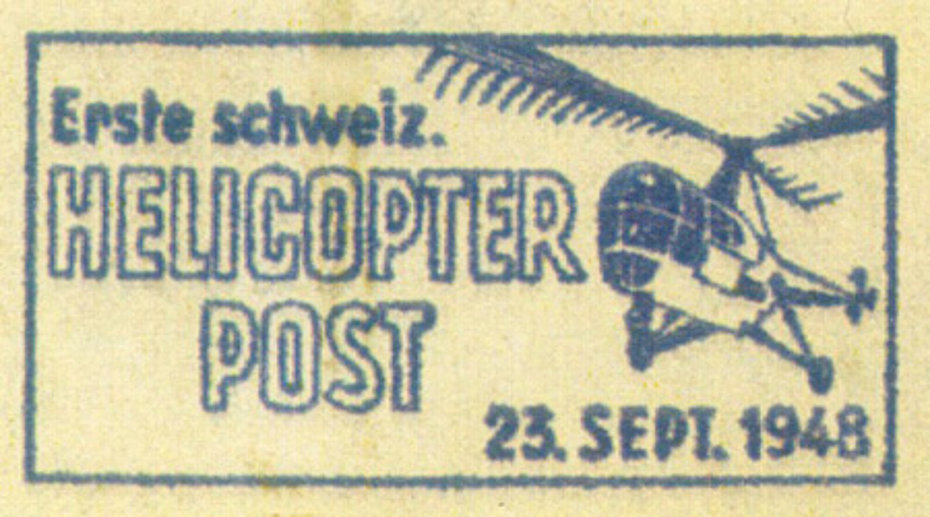
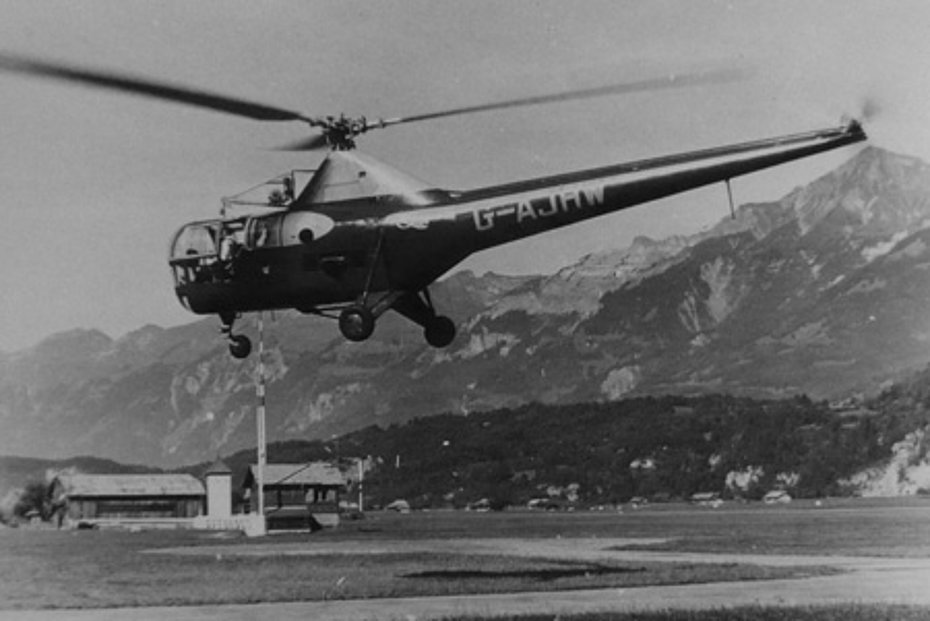
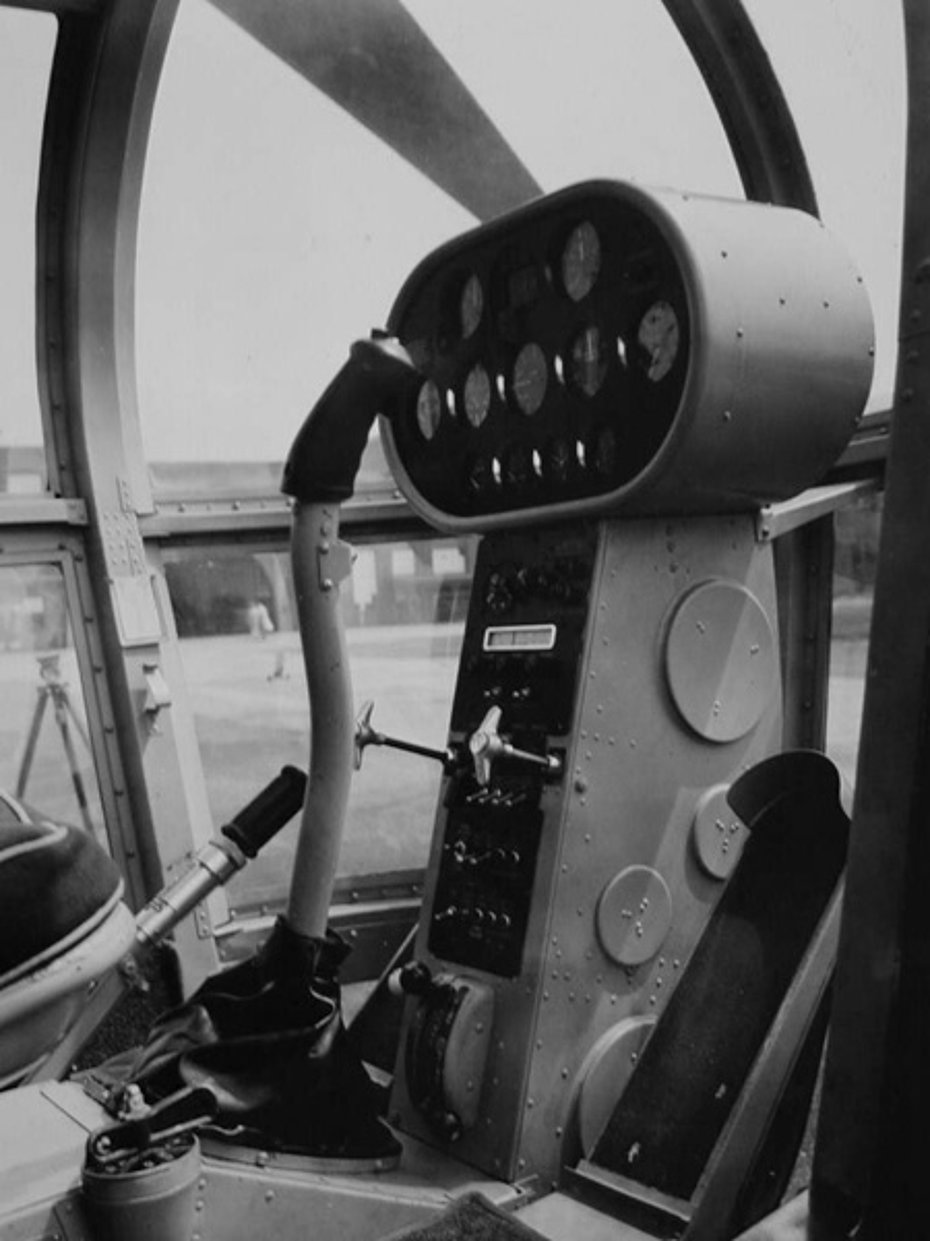
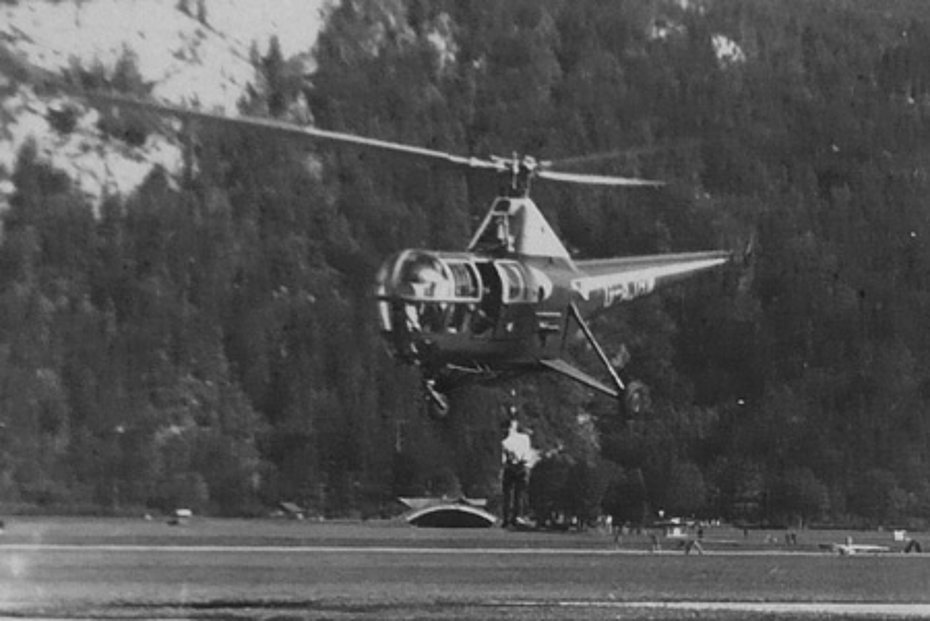
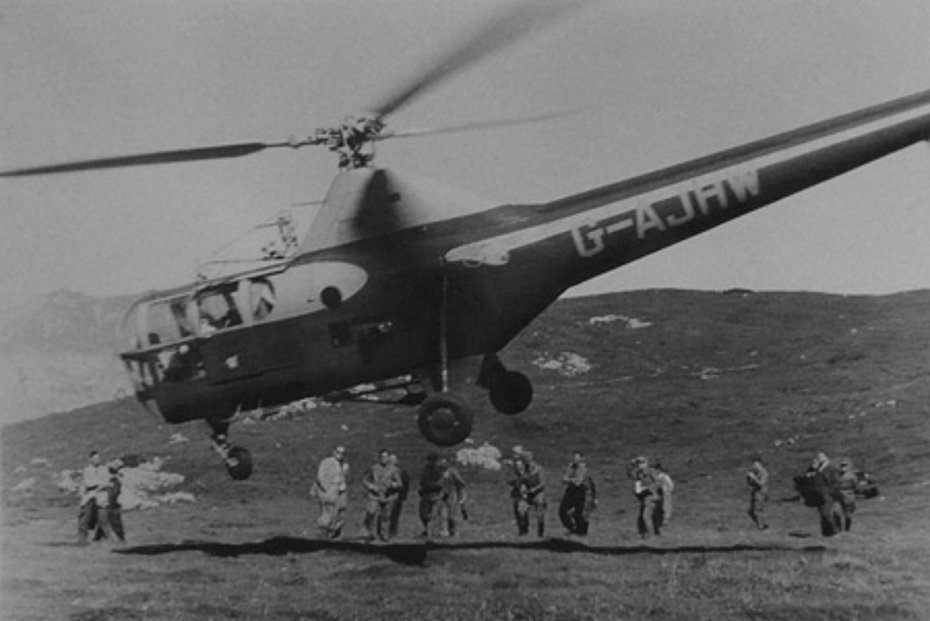
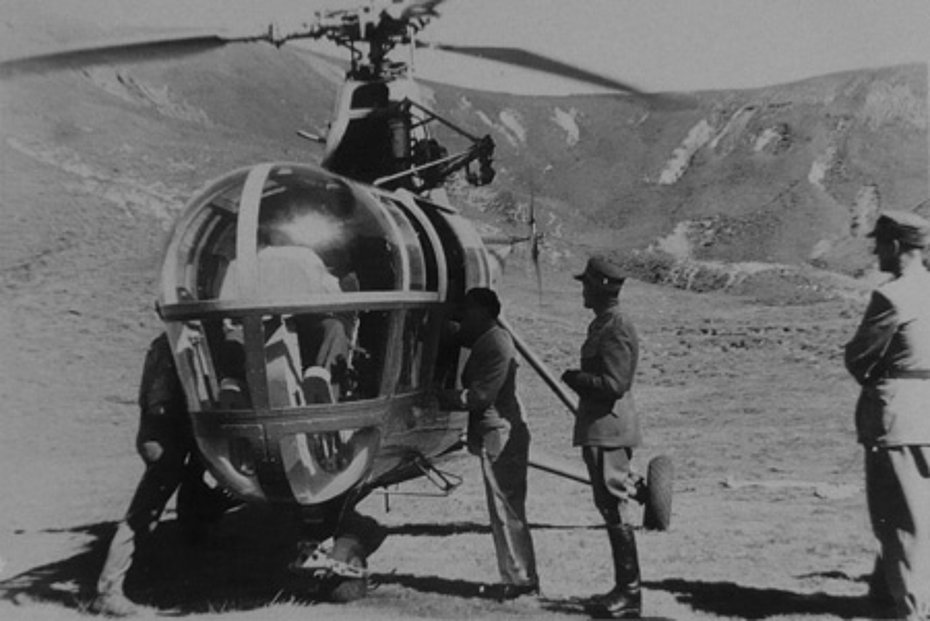
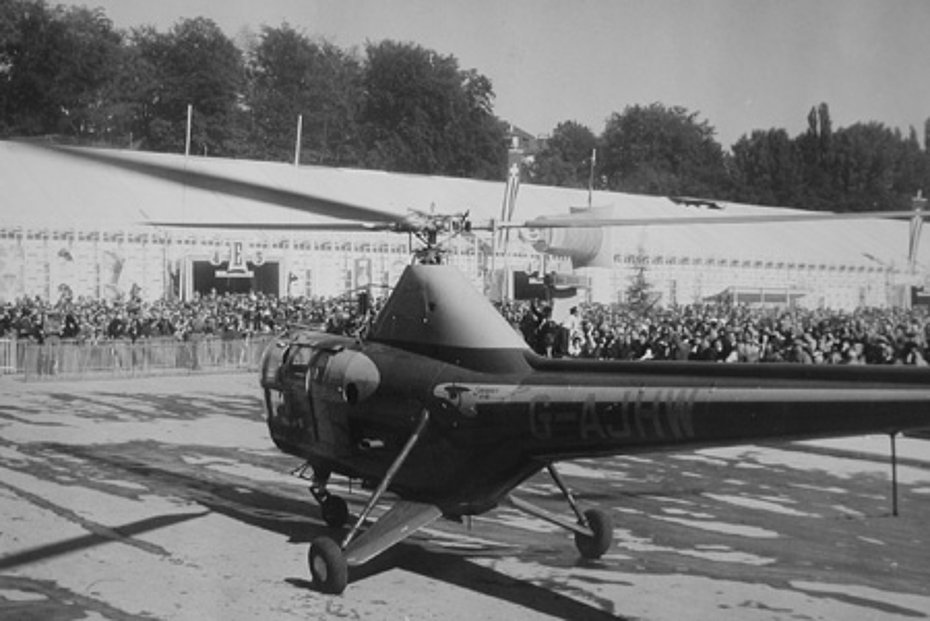
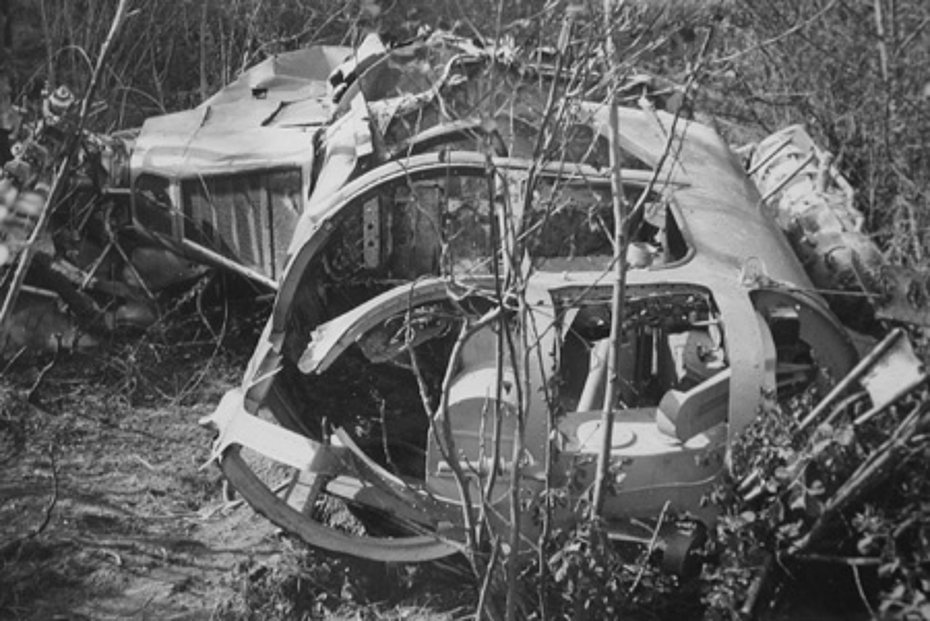
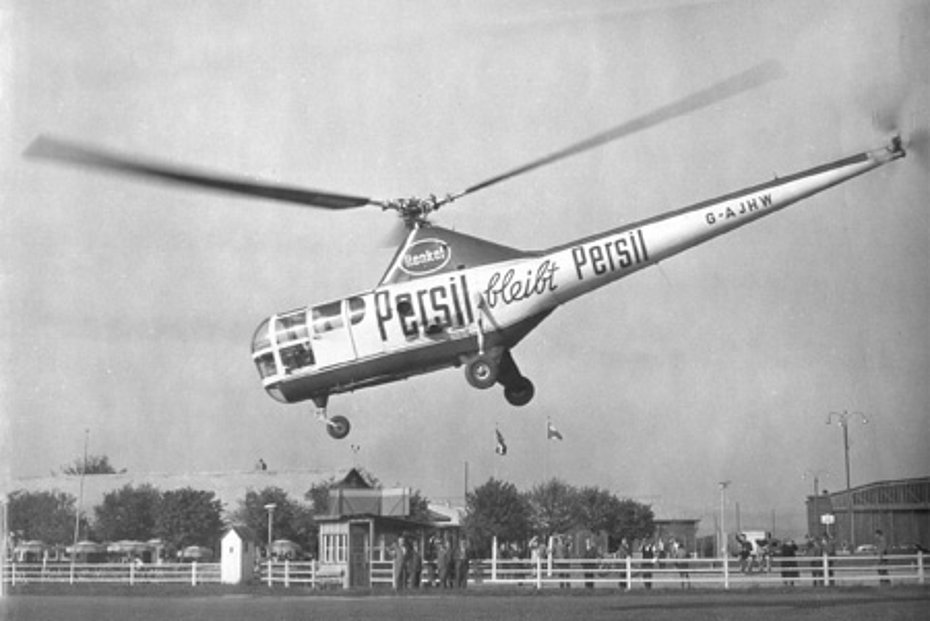
During WWII several variants of the Sikorsky R-4 and R-6 were used by Americans and the British troops. Sikorsky intended to develop a civil variant of its XR-5 (this was in fact the original designation) for the post-war market.
The S-51 was similar to its predecessor, but it had some peculiarities. The cabin for example was reshaped to accommodate 3 passengers behind the pilot instead of one. The original landing gear was also modified.
The first S-51s were delivered to commercial operators in August 1946. Among the first civil companies to use this model there was Helicopter Air Transport (HAT) managed by Jonathan (John) Wilford. That delivery preceded by a few days by that to Greyhound Air Lines, a subsidiary of Greyhound Bus Lines.
HAT was based at the Central Airport of Camden (New Jersey) and used three S-51 for the transportation of mail and passengers as well as the flying school. The flying activities were managed by Major Frank T. Cashman who was the chief-pilot and instructor of HAT.
The company inaugurated a mail service in various large cities such as Philadelphia, Los Angeles and Chicago.
The British company Westland, well known for its airplanes, at the end of the war decided to enter the helicopter market, and on the 10th of January 1947 signed an agreement with the Sikorsky Division of the United Aircraft Corporation for the manufacturing rights of the Sikorsky S-51.
The WS-51 Dragonfly was not however an exact copy of the American model. It was actually powered by a more powerful 374/500 kW/hp Alvis Leonides in place of the 335/450 kW/hp Pratt & Whitney. The prototype of the WS-51 Dragonfly registered G-AKTW made its first test flight on the 5th October 1948 piloted by Alan Bristow.
The first European operator to employ this helicopter was British European Airways (BEA) along with Pest Control Ltd, whose helicopters were equipped with a purposely designed pressure spray system.
The Sikorsky S-51s were extensively used in the '40s and early '50s to test the practical capacities of the helicopter. Despite the fact that it was a good helicopter, this model, in the civil field, did not however attain the commercial success (in terms of sales) expected by the American manufacturer.
Its sale price of about 48'500$ was more than twice that of a Bell 47B or a Hiller 360, and its operating cost was considered excessive. High pricing was one of the reasons which drove a number of commercial initiatives into bankruptcy.
Accordingly the first production year saw only eleven S-51 sold against a projected figure of sixty units with the second year only three S-51 sold!
The last evolution of the Sikorsky S-51, the five place Widgeon developed by Westland as a private venture, still experienced only limited commercial success.
Altogether Sikorsky built 294 units of the R-5/S-51 series, while Westland produced 149 WS-51 Dragonfly.
Civil operators used about only fifty of these models for their services.
In the United States the production ceased in 1951.
Technical description
The Sikorsky S-51 is a four-seater (pilot and three passengers) general purpose helicopter of classical configuration of the so-called first generation.
The fuselage of mixed contruction is built up with three main sections which are bolted together: the cabin structure, the center section and the tail boom. The cabin structure and the tail boom are of monocoque construction, while the center section is made with welded steel tubes.
Access to the cabin accommodation is trough separate sliding doors for pilot and passengers. These are seated side-by-side on a bench. The pilot access to his seat through a sliding door on the right of the cabin while the passengers have a door of the left side.
The pilot's seat and instrument panel are located on the aircraft's centreline. On the back of the pilot's seat there is a first aid kit and pockets for maps or documents. The Plexiglas windows and doors provide the pilot and the passengers with an excellent view. The cabin is 135 cm high, 142 cm wide, and 254 cm long.
The helicopter has conventional controls. A dual control cabin configuration is possible. The instructor and the student seat in tandem when the bench seat is removed and a second pilot's seat is installed.
At the beginning the S-51 was not fitted with hydraulic controls. However these were later introduced as an optional equipment.
There are three individual hydraulic systems: the main rotor damper system, the main rotor brake and the wheels brake circuit.
In the center section there is the transmission and the engine. The S-51 is powered by a nine cylinders radial Pratt & Whitney R-984-B4 Wasp Junior engine. The power plant, which is installed in the horizontal plane beneath the clutch and fan and the main gear box, has a max take-off power of 335/450 kW/hp at 2'300 rpm (37.0 hg).
The engine compartment is enclosed fore and aft by two metal fire walls and a metal horizontal baffle extending across the bottom from side to side.
The helicopter has two fuel tanks with a total capacity of 379 liters. One is located forward and one aft the engine. Both are separated from it by fire walls. The filler caps are accessible from the right side of the fuselage. The oil tank has a capacity of 30 liters an is located behind the rear fuel tank, in the tail cone support section of the fuselage.
The main rotor was originally equipped with three blades of mixed construction (steel, laminated spruce plywood, covered with doped fabric). Some operators replaced these blades and installed all-metal rotor blades which gave the S-51 a good increase in performance and a very welcome smoothness.
The electric system includes a 24V 17Ah standard battery mounted on a rack located in the cone support section of the fuselage and a 28.5V 50Ah generator.
The external power receptacle is mounted on two brackets located aft to the left of the cone support section of the fuselage where there is also the baggage compartment. Here, in compliance with the weight and balance diagram, it is possible to stow for example the protective covers, tool kits or the mooring equipment. The maximum loading weight is 65.7 kg.
The three blades tail rotor is mounted on the tail cone which is of monocoque construction. Its blades are made of wood. The blades spars are laminated birch, with ribs of spruce. A plywood cover runs from the trailing edge of each blade to 25 percent of chord. There is a stainless steel strip fastened to the leading edge. Strangely the helicopter is not usually fitted with a tail rotor protection.
Much later some operators replaced the original tail rotor with a new two blades metal rotor which was identical to the one of the Sikorsky S-55.
The landing gear is of the tricycle wheel type, with two main wheels and a swiveling nose wheel. The helicopter is not fitted with vertical or horizontal stabilizers.
Performances
In standard atmospheric conditions, at its maximum takeoff weight of 2'404 kg, the helicopter had a cruising speed of 136 km/h, while the never exceed speed at sea level was 165 km/h.
With a takeoff weight of 2’404 kg the initial rate of climb was about 305 m/min. In the same flying conditions the helicopter hovered in ground effect at about 1’675 meters, or 1'066 meters out of ground effect. Service ceiling was about 2’961 meters.
With an average hourly fuel consumption of 106-114 litres, its range was about 392 km, corresponding to about 3h20’min of flight endurance.
Dimensions, weight and payload
The original main rotor of the Sikorsky S-51 had a diameter of 14.63 m (disc rotor area 168 sm), while its tail rotor had a diameter of 2.59 m. The fuselage had a length of 12.52 m. The height measured on the top of the rotor mast was 3.94 m.
The standard empty weight of the aircraft was about 1'723 kg, while its MTOW which was at the beginning 2'263 kg was later increased to 2'404 kg.
Allowing for a standard pilot weight (77 kg) and with a fuel and oil reserve for one hour of flight (about 90 kg) the helicopter could carry three passengers with their baggage, or a maximum payload of about 516 kg. On its barycentric hook it could carry sling loads of about 200-250 kg.
Rotor and engine limitations
In flight the rotor rpm must be kept between 168 and 245 rpm while the engine range must be kept among 2'050 and 2'300 rpm. Cylinders head temperature 100-260°C.
Autorotation
To correctly execute an autorotation (simulating for example an engine failure during cruise flight at an altitude over the ground exceeding 120 metres) it is necessary to immediately push down the collective pitch lever and correct the yaw with the right pedal. The gliding approach was generally executed at a speed of 96 km/h (60 mph). With this speed the rate of descend was approximately 365 m/min. At 6-9 metres altitude the pilot executed a flare to reduce the speed to about 40 km/h (25 mph). The helicopter was then leveled off and settled gradually to the ground. Test pilots demonstrate that a S-51 flying at 25 km/h (40 mph) or more airspeed could safely land in autorotation effecting a safe landing from any altitude. With ideal circumstances the helicopter could also obviously land without forward speed.
Optional equipments
The helicopter could be provided with the following main optional equipments: heater and fan, first aid kit, landing lights, external covers, spray kit, litters kit for two casualties, hoist kit, hook for underslung loads, equipment for the transport of mail bags.
Civil employ
The Sikorsky S-51 was mainly used for the transportation of passengers and mail, as an aerial sprayer and for the training of the pilots. In the '40s and early '50s it was extensively used to test the capacities of the helicopter for example as a search and rescue mean, aerial crane, aerial observation platform aboard of ship, photographic flights, etc. Some were also used for aerial advertising.
The Sikorsky S-51 in Switzerland
During the summer of 1948 the newly founded aviation company Air Import of Lucerne informed the FOCA about its intention to present in Switzerland a Sikorsky S-51.
The civil and military authorities were greatly interested in this private initiative. The program prepared by Air Import included a series of flying demonstrations in several Swiss cities and locations.
On the 22nd of September the British pilot Alan Bristow landed at the Zurich's airport at the controls of the Sikorsky S-51 G-AJHW (s/n 5117 b/y 1946). This aircraft was extensively used by Westland for demonstration purposes. In the following days the helicopter started the demontration tour transporting bags of mail from the central postal office in Zurich to the Kloten's and Dübendorf's airports. In Zurich the helicopter landed on the square of the military barracks which was surrounded by an astonished audience.
The event was commemorated with a special postal stamp (see picture). Then in the afternoon Bristow flew to the airport of Meiringen.
There the following day he performed a series of demonstration flights for the Swiss hydroelectric companies. The helicopter lifted nets containing building material suspended on its barycentric hook.
Using the rescue hoist Bristow lifted people and goods to show the qualities of the helicopter as a search and rescue means.
He also did some patrol flights along the electric power lines and some mountain landings.
On the 25th of September he flew to Lausanne and landed on the Swiss Comptoir’s garden for a new series of flight demonstrations.
On the 26th the helicopter was presented during an aviation meeting organized in Porrentruy and then it returned to Meiringen.
The following day it was used for a series of flights for the military and the civil authorities. This demonstration was watched by a delegation of the FOCA and a group of the Swiss Alpine Club.
During the morning the helicopter did various landing exercises in the surrounding mountains. It landed for example on Krautmättli's alp (1'800 m) and then on Lütschental's alp (2'050 m) with a passenger.
The last mountain landing was made on the 2'300 m mountain shooting range of the Ebenfluh-Axalp. In that occasion however Bristow was alone on board. He then returned to Meiringen and flew to Berne where the helicopter was once again used for the transportation of mail.
On the 28th of September Bristow hovered a few feet above the main postal office's rooftop to carry some mail bags. A landing was impossible because the structure of the roof couldn't sustain the helicopter's weight.
Similar tests were again done the following day when the helicopter flew to Bienne.
The tests were concluded on the 30th of September when the S-51 left Switzerland.
These displays showed the helicopter's unique abilities and were watched by a large audience. The event also captured the interest of reporters, newspapers and the Swiss newsreel.
At the beginning Air Import, which became Westland's sales representative for Switzerland, was seriously interested in the Sikorsky S-51, but it did not purchase it, probably because it was too expensive.
The price for a new Sikorsky S-51 at that time was about 360'000 Sfr., and the cost for one hour of flight was about 800.— Sfr!
The following year the company opted for a Hiller 360, which had of course more limited performances, but was also much cheaper than its British competitor.
Aerial spraying activity in Valais
By the end of April 1950 the British company Pest Control, which was specialized in aerial spraying operations, was charged to take care of an invasion of cockchafers in the Canton Valais. Along with the conventional methods Pest Control also used helicopters and airplanes.
For these purposes the company sent to Switzerland the Westland-Sikorsky S-51 G-ALEI (s/n WA/H/4, b/y 1949) fitted with a spray equipment.
On the 1st of May the helicopter was unfortunately damaged during a landing. It was necessary to change its tail boom. The damaged helicopter received from England a "new" tailboom which belonged to another helicopter (G-ALEG) and thanks to which it could fly once again. On the 4th of May the helicopter resumed its flights. At its controls there were the pilots Jimmy Harper, Lincoln Lord and Peter Moore. Unfortunately the latter hit a telephone cable and crashed near Aproz in the early afternoon.
In the accident, the first happened to a helicopter in Switzerland, he was seriously injured while the WS-51 was damaged beyond repair.
The Sikorsky S-51 G-AJHW made a new apparition in Switzerland in May 1954. In that occasion it was rented by Flugzeughandel in Zurich for the Mustermesse (MUBA), a fair which is annually organized in Basle.
The helicopter piloted by the British pilot John Crewdson was used to advertise the famous laundry detergent Persil produced by Henkel. On its sides there was the script “Persil bleibt Persil” which means “Persil is always Persil”.
The Basle's police also rented the helicopter which was employed experimentally as a flying observation platform.
That was probably the last apparition of this helicopter in Switzerland.
Noteworthy facts
In August 1946 the Helicopter Air Transport (HAT) offered some pilot courses. The price for one hour of instruction on the Sikorsky S-51 was 100$.
In Western Pennsylvania a HAT Sikorsky S-51 was experimentally used to raise the temperature of a crop to save it from a late frost. Flying over the orchards it provided circulation of the air which prevented a frosting that could have ruined the entire yield. This unusual usage of the helicopter was done at the request of the Fruit Growers Exchange organization.
In 1946 a US Senator in the East Coast used a HAT S-51 for his electioneering campaign. This enabled him to quickly get to the more isolated destinations, and land right in the heart of his constituencies.
Interesting link
Last but least this news footage of the British Pathé: https://www.britishpathe.com/video/helicopter-demonstration-1/query/sikorsky+s-51
HAB 01/2011

